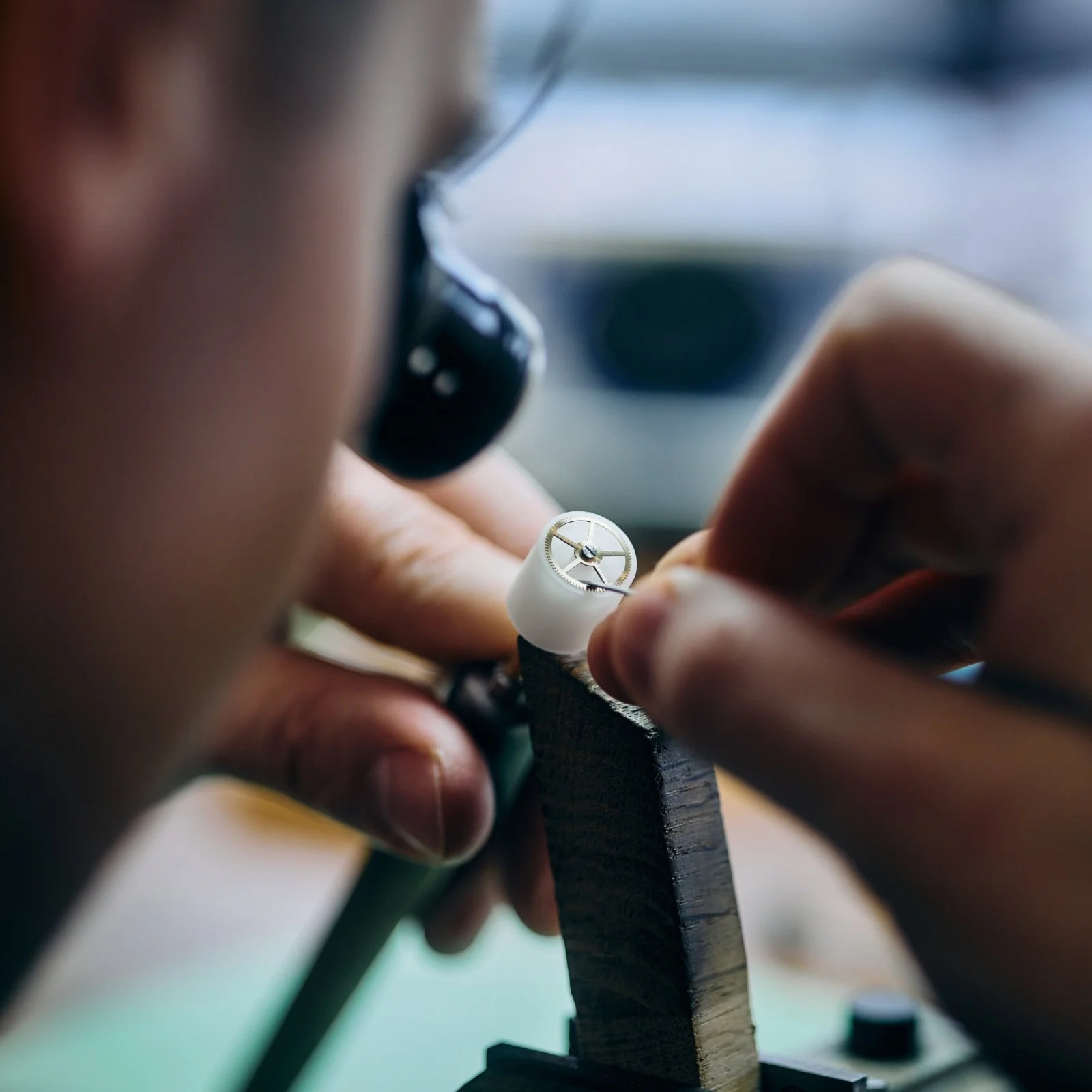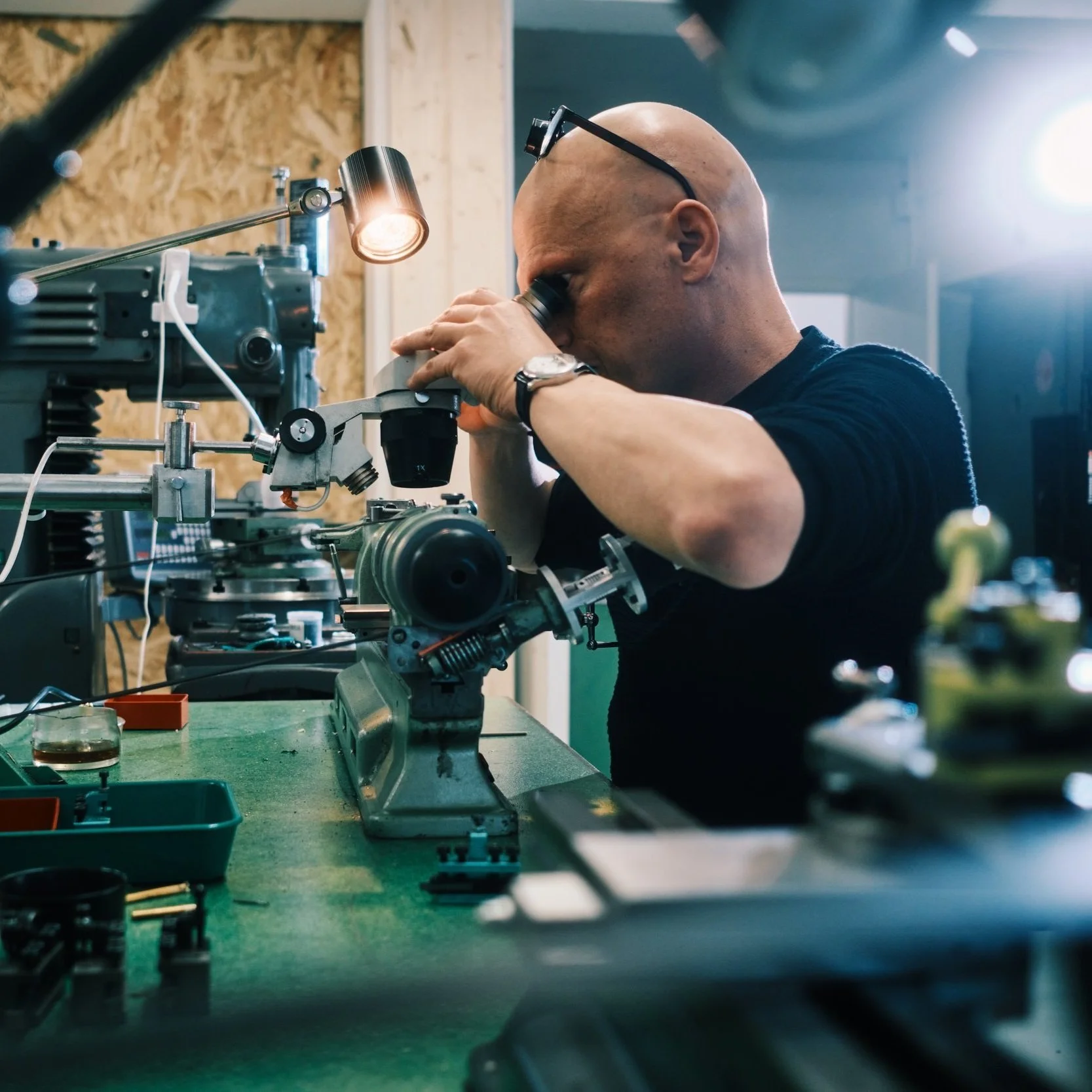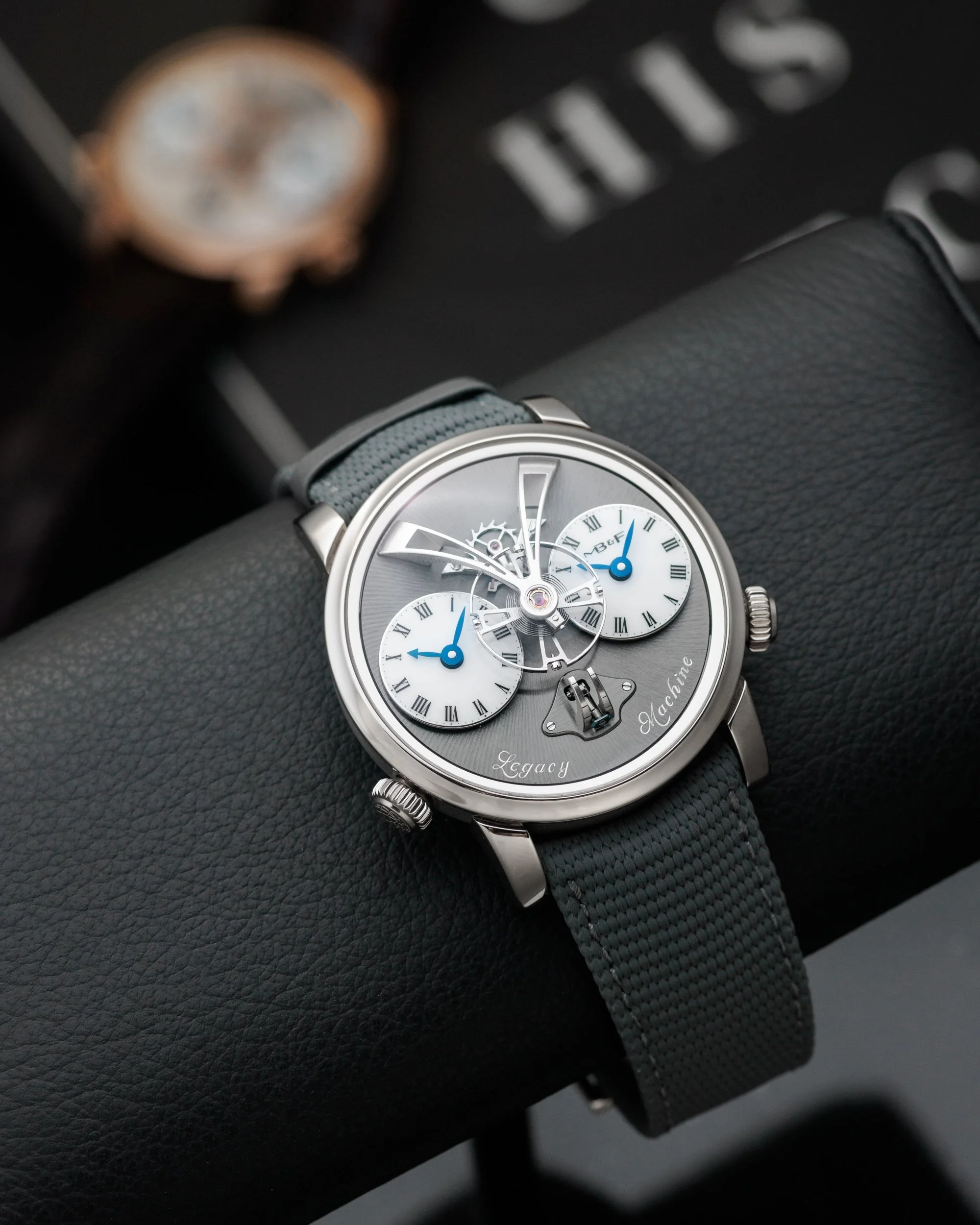How the next generation of independent watchmakers will be… different
Independent watchmaking has come a long way in a short period of time. It was 20 years ago that leading brands like Urwerk, De Bethune, F.P. Journe, Greubel Forsey, and Kari Voutilainen were in their infancy. MB&F and Akrivia didn’t even exist yet. Today, we see a wave with the next generation of watchmakers from Felipe Pikullik to Remy Cools and Petermann Bedat.
Comparing past to present, one of our questions about the current rise in new indie watchmakers is how will things develop differently for those entering the scene now? After all, there’s a gulf, on nearly every possible level, between the early 2000s to the early 2020s from the technology in day-to-day life to manufacturing innovation behind the scenes. Today, we’re mapping what we expect to change when watchmakers launch their new ventures.
It won’t take 20 years for brands to be “big”
Remy Cools finishing parts in his workshop
The internet, specifically social media platforms like Instagram, has changed the game forever for independent watchmakers. In the pre-internet era, watchmakers launched their creations by traveling the globe, meeting collectors and distributors, and hoping that something would sell. Maybe they would buy an ad in a watchmaking publication. Generally, selling at the earliest stage of a new watchmaking venture was a grueling, time-intensive process. So much so that many talented watchmakers simply didn’t have money and connections to distributors to make it work.
Now, many independent watchmakers are building in public. The watch community regularly sees the earliest ideas from rough sketches to prototypes. Watchmakers show progress through social media, sometimes from at-home workbenches in places as far ranging as the Netherlands or South Korea. There’s an audience that follows, supports, and provides feedback throughout the earliest days of a watchmaker’s journey.
This approach to watchmaking in public has rapidly accelerated the rate at which sales are conducted. Before a timepiece is even completed, there’s an entire community that tracks the project at every step. For new indie watchmakers, many timepieces are sold through direct messages on Instagram. We’ve seen a number of watchmakers launch their first timepieces, selling a full run of 10-15 watches, without ever leaving their workshop. There’s never been a better time to sell high-end timepieces – and there’s never been a better time to create them as well.
Accelerating innovation in manufacturing technology
Sylvain Pinaud in his workshop
While social media has broadened awareness and facilitated streamlined sales, industry has also seen a revolution in manufacturing technology. CNC machinery and tooling, CAD software, laser cutting and engraving equipment, even “classic” motorized lathes are now less expensive and more user-friendly than ever before. While the time it takes to finish a given part may remain the same (handmade anglage of yesteryear is handmade anglage of today), the time and cost to create rough components has been dramatically reduced.
One layer of the industry where these technological improvements appear most clearly – the US$10-25,000 price range. Often, these timepieces utilize base movements with a significant, value-added overhaul, often including redesigned base plates, bridges, and high-level finishing. Here, we see watchmakers like Felipe Pikullik moving at a feverish pace, releasing five timepieces in five years. The ability for even small workshops to craft their own rough components at relatively breakneck speeds is astounding. While there will always be watchmakers who choose to work at more traditional speeds, we expect that there will be an industry-wide sunsetting of the 4-7 year development cycle for most timepieces. Especially for those that are not ultra-complicated, we’re moving into a more rapid-paced development cycles for wristwatches.
There’s a lot more space for the new and unusual
Beyond the relative ease of building brand awareness and lower cost, higher quality manufacturing technology, there’s arguably an even bigger cultural difference between the early 2000s and today. That is, the watch community is well primed to explore and collect independently crafted watches. Gone are the days when Max Büsser was being pushed back and forth between watch distributors and art galleries, both unsure if the first Horological Machine was a wristwatch or some form of sculptural artwork. Whether it’s ultra-fine finished, traditional watches or more avant-garde in its design, there’s significant fandom for nearly every type of watch that exists today. What was the smallest niche, indie watchmaking in the late 1990s, is now a fully globalized market.
Today, the concept of “independent watchmaking” – creative, entrepreneurial watchmakers that usually focus on ultra-fine craftsmanship – doesn’t really need much explanation anymore. As a side note here, there appears to be very few avant-garde watchmakers in the new wave of watchmakers. It’s a little curious, as Max Büsser mentioned in our interview from last year’s Geneva Watch Days. There’s a broad trend toward “classical” aesthetics, while the most experimental designs still come primarily from the usual trio – Urwerk, De Bethune, MB&F.
Regardless of the aesthetics, there’s a new era of independent watchmakers working within a new era for the watchmaking ecosystem as a whole. The rise of social media, enhanced manufacturing technology, and a primed watch community for indie timepieces will also bring its own challenges – it’s not all daisies. Differentiation is increasingly important. The stories and vitality behind creations is more important than ever. But it’s not all different. There is one commonality that will exist across the 2000s and 2020s – each watchmaker will have their own unique journey. Some will want to stay small, and do so. Some will want to grow, and do so. Some may want to stay small, and end up growing a lot. Others, the opposite way around. Speaking with so many watchmakers over the last five years, we know that the path is always full of twists and turns. This is sure to keep things exciting, both for us in the watch community and for the next generation pushing to put their fingerprint on the history of watchmaking.





